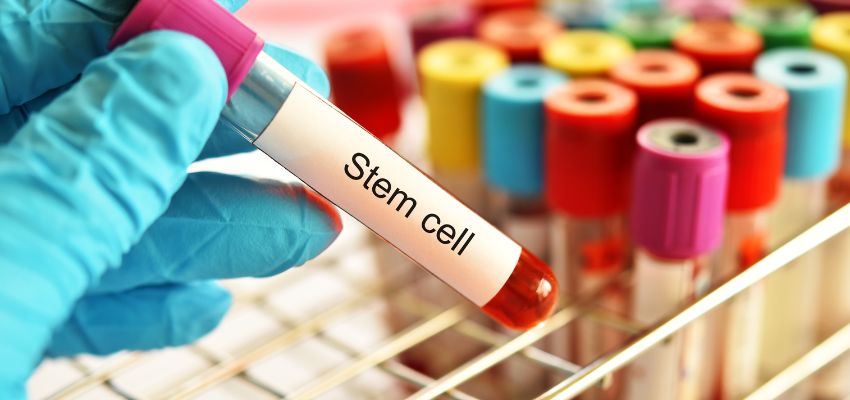Why Regenerative Medicine Treatment Is Gaining Popularity
Are you tired of treatments that only mask symptoms instead of addressing the underlying problem? Regenerative medicine treatment is changing healthcare. It focuses on repairing and restoring the body from within. These personalized, minimally invasive treatments offer holistic solutions for chronic conditions and injuries. It’s time to explore a better path to healing.
In this article, we’ll explore regenerative medicine treatment and its differences from traditional care. It explains why it’s becoming a popular choice for advanced, natural therapies. Discover the science, benefits, and future of healing with regenerative medicine.
What Is Regenerative Medicine Treatment?
Regenerative medicine is a revolutionary field that harnesses the body’s innate capability to heal and restore itself. Unlike traditional treatments, it doesn’t just manage symptoms; it addresses the underlying cause. Instead, it focuses on repairing and regenerating damaged tissues, organs, and cells.
Regenerative medicine helps the body heal itself. It offers new hope for chronic conditions and injuries. This innovative field is changing healthcare. Treatments are becoming less invasive and more effective.
How Regenerative Medicine Differs From Traditional Treatments
Regenerative medicine is different from traditional treatments. It uses the patient’s cells to promote healing. This reduces the need for medications or surgery and minimizes the risk of complications, such as immune rejection. Traditional treatments often manage symptoms. Regenerative therapies, however, focus on the root cause of the condition. They offer the potential for long-term relief instead of temporary fixes.
Take osteoarthritis, for example. Traditional pain management relies on anti-inflammatory medications. In advanced cases, it may lead to joint replacement surgery. Regenerative medicine offers a different approach. Stem cell therapy can stimulate tissue repair in the joint. This may delay or even eliminate the need for surgery.
Advancements In Regenerative Medicine
Regenerative medicine utilizes advanced therapies to facilitate the body’s natural healing process. These treatments are designed to be minimally invasive and customized for each individual. They offer an alternative to surgery or long-term medication. By being effective and personalized, regenerative therapies are transforming healthcare.
Here are some key advancements in this field:
Stem Cell Therapy
Stem cells can transform into different cell types. This makes them a robust tool for healing and regeneration. When placed in damaged areas, such as joints, nerves, or muscles, they repair tissues and restore function. This therapy is used to treat orthopedic injuries, neurological disorders, and autoimmune diseases. It offers hope and recovery for many conditions.

Platelet-Rich Plasma (PRP)
PRP therapy leverages the body’s innate healing capabilities to accelerate recovery. The process begins with drawing a small sample of the patient’s blood, which is then processed to isolate and concentrate platelets. These platelets, enriched with growth factors, are injected directly into the injured or inflamed areas. This treatment works well for musculoskeletal injuries. It hastens tissue repair and reduces inflammation.
Tissue Engineering
This technique enables the growth of functional tissues in laboratories. It combines cells, engineered materials, and biochemical factors. It has shown remarkable success in reconstructing skin, cartilage, and even organ tissues damaged by trauma or disease.
Extracellular Vesicle Therapy (Exosomes)
Exosomes are tiny vesicles released by stem cells. They contain essential proteins, RNA, and signaling molecules. Unlike traditional cell-based therapies, exosome therapy delivers bioactive compounds directly to damaged tissues. This targeted method enhances cellular communication and accelerates tissue regeneration with precision.
Gene Therapy
Gene therapy in regenerative medicine heals by targeting genetic issues. It works by adding or altering genes in a patient’s cells. This approach helps repair tissue, fix genetic disorders, and address chronic conditions.
Biological Scaffolds
Biological scaffolds are structural frameworks from donor tissues or organs. They’re carefully processed to remove cellular material. The result is a scaffold that can be repopulated with the patient’s cells. This offers an innovative way to reconstruct complex tissues and organs.
Benefits Of Regenerative Medicine Treatment
Regenerative medicine is gaining acceptance for its ability to enhance healing and recovery. These benefits are shaping the future of healthcare.
Here’s a closer look at its key benefits:
Natural Healing Through Minimally Invasive Therapies
Regenerative treatments harness the body’s natural healing abilities. They work to repair and rejuvenate tissues. These therapies help reduce inflammation and promote faster recovery. They offer an alternative to invasive surgeries. PRP, for example, has been highly effective in reducing joint pain from osteoarthritis. Patients recuperate faster and can resume daily routines with less disruption.
Personalized And Targeted Therapies
Regenerative medicine takes a personalized approach to treatment. It tailors therapies to a patient’s condition, genetics, and lifestyle. This improves effectiveness and lowers the risk of side effects. For example, stem cell therapies have been utilized to repair nerve damage and restore mobility.
Faster Recovery And Lasting Relief
Regenerative treatments are a great alternative to surgery and chronic wounds. They offer brief recovery times and minimal risks. Most procedures are minimally invasive and done on an outpatient basis. These treatments provide long-term relief for chronic injuries and joint degeneration. They help patients regain mobility and improve their quality of life.
A practical example of this is amniotic tissue allografts from DonorCure. These allografts use natural growth factors and anti-inflammatory proteins from the amniotic membrane. They accelerate tissue regeneration, reduce inflammation, and enhance healing in chronic and post-surgical wounds.
Advances In Technology And Science
Innovations in stem cell biology and biotechnology have improved regenerative medicine. New methods in cell extraction, processing, and delivery have made treatments safer and more effective. What was once experimental is now a practical option for routine care.
Expanded Accessibility And Integration In Medicine
Regenerative treatments are no longer limited to research labs. They’re now widely available in clinics and hospitals. Improvements in technology and medical expertise have made this possible. Many doctors now incorporate regenerative therapies into their treatment plans, often in conjunction with traditional treatments. They help speed up recovery after surgery and improve overall health.
Frequently Asked Questions
Is regenerative medicine safe and approved?
Regenerative medicine treatments are widely regarded as both safe and effective. They use the patient’s cells, reducing risks such as immune rejection. Some therapies are still in clinical trials. However, many are already approved and widely used.
How long does it take to see results?
Results depend on the treatment and condition. Some patients see improvements in weeks. Others may need months to feel the full benefits. Recovery time varies depending on the type of therapy and the individual’s unique healing process.
Who is a good candidate for regenerative therapies?
Regenerative therapies may help with chronic pain, joint injuries, or degenerative conditions. They are a good option for those avoiding invasive procedures. A medical evaluation is needed to see if these treatments are right for you.
Does insurance cover these treatments?
Insurance coverage for regenerative medicine differs. Some providers now cover PRP and specific stem cell therapies. However, many treatments are still considered experimental and are not covered by insurance. Patients should verify the details with their insurance provider to confirm accuracy.

A New Era Of Healing With Regenerative Medicine
Regenerative medicine treatment is making rapid progress. Research in stem cells, tissue engineering, and gene therapy is driving this advancement. It offers natural and minimally invasive options. The focus is on the body’s healing abilities. This approach supports long-term wellness and personalized care. Patient interest continues to grow in tandem with innovations. Regenerative medicine is transforming the future of healthcare, offering hope for improved mobility, quicker recovery, and pain-free living.
Ready to experience advanced wound healing with amniotic tissue allografts? Learn how DonorCure can transform your recovery—visit DonorCure to discover cutting-edge solutions today.
Heal Ulcers, Burns, & Surgery Wounds With Break-Through Amniotic Allograft Treatments
Experience the future of wound care with our advanced amniotic allograft treatments. Say goodbye to slow healing. Our innovative solutions promote faster recovery from pressure wounds, ulcers, burns, and surgical wounds. Trust the power of science for your healing journey. Regain your comfort and health today! See if you are eligible for treatment here.

About The Author
Corinne Grace is a full-time writer living in the Philippines. She has a nursing degree from Riverside College. Her background in nursing informs her perspective, allowing her to weave in themes of health, empathy, and resilience into her work.




